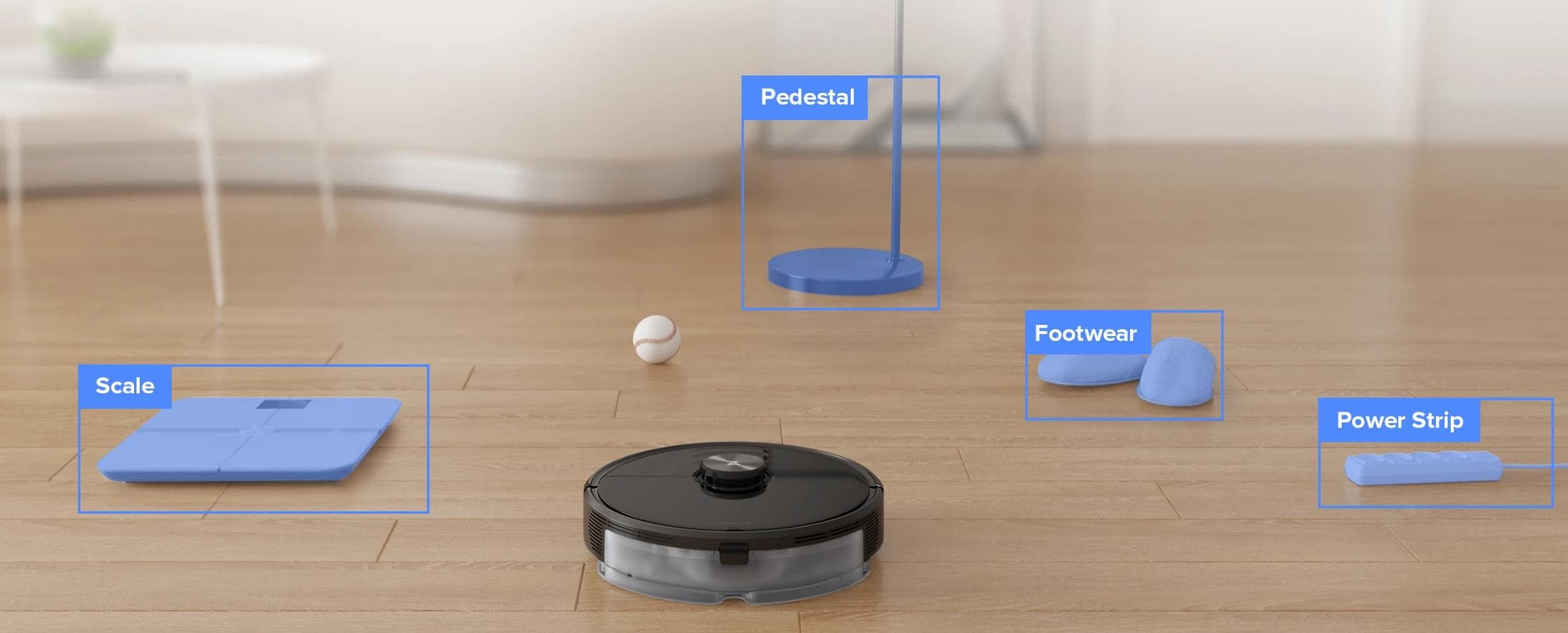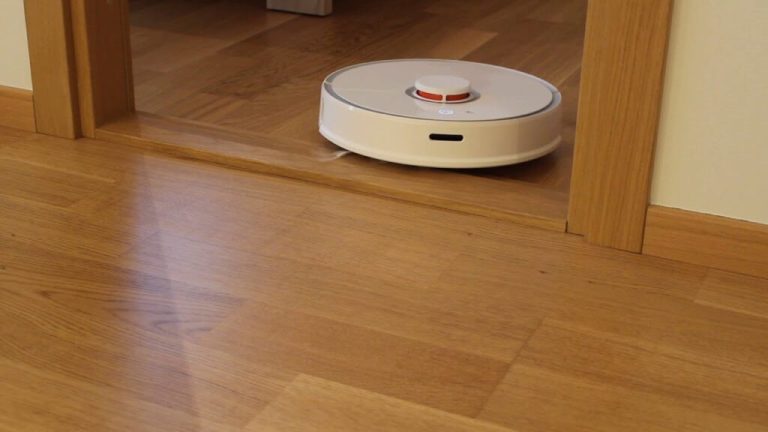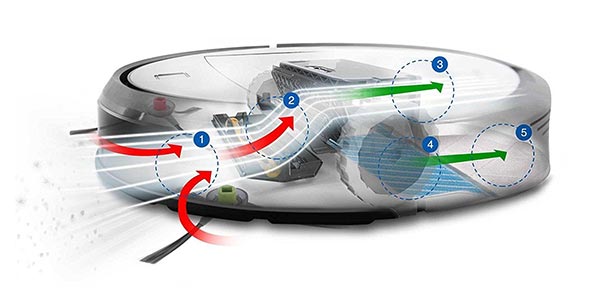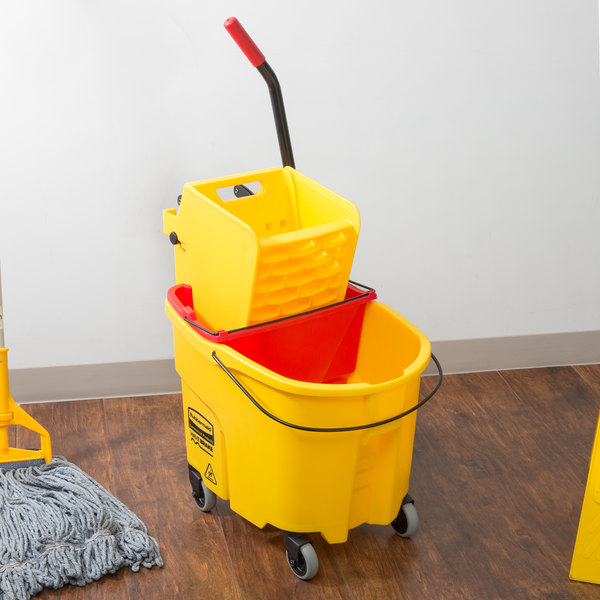How Does Robot Vacuum Mapping Work?

Robot vacuums have become increasingly popular in recent years, as they offer a convenient way to keep your floors clean with minimal effort. But how do these clever little devices know where to go and how to avoid obstacles? The answer lies in their ability to map out your home using lasers or sensors.
In order to create a map of your home, the robot vacuum needs to know its own location and the locations of objects around it. This is typically done using sensors that detect changes in infrared light or sound waves. The vacuum then uses this information to build a virtual map of its surroundings, which it can use to navigate your home more effectively.
If you’ve ever wondered how those nifty little robot vacuums manage to clean your floors so well, the answer lies in their mapping capabilities. Robot vacuums are equipped with sensors that allow them to map out the layout of your home as they clean. This means that they can avoid obstacles and know where they’ve already been so that they don’t waste time going over the same area twice.
Mapping also allows robot vacuums to create virtual barriers. For example, if you have a pet bowl that you don’t want the vacuum to go near, you can create a virtual barrier around it using the mapping feature. This ensures that your vacuum won’t accidentally knock over the bowl or get tangled up in the cord.
Overall, robot vacuum mapping is a great way to keep your floors clean without having to lift a finger.
How does robot vacuum mapping work?
How Does a Robot Vacuum Map Your House?
Robot vacuums use sensors to map your home as they clean. These sensors allow the vacuum to avoid obstacles and navigate around furniture. The vacuum’s mapping system creates a virtual map of your home as it cleans, which it uses to plan the most efficient cleaning route.
This means that the vacuum can clean your entire home without missing a spot. Most robot vacuums use lasers or optical cameras to create their maps. These sensors scan the area around the vacuum and send information back to the onboard computer.
The computer then processes this information and creates a map of your home. This map is stored in the memory of the vacuum, so that it can refer back to it when needed. Some robot vacuums also come with additional features that make them even more effective at mapping your home.
For example, some models come with an ‘edge-detection’ feature that allows them to identify edges and corners more accurately. This helps them avoid bumping into furniture or getting stuck in tight spaces. Overall, robot vacuums are very effective at mapping your home and ensuring that they clean every single corner effectively.
If you’re looking for a vacuum that will do a thorough job of cleaning your home, then a robot vacuum is definitely worth considering.
What Does Robot Vacuum Mapping Do?
Robot vacuum mapping is the process of creating a map of your home so that the vacuum can clean more efficiently. This is done by using sensors to create a virtual representation of your home, which the vacuum can then use to plan its cleaning routes. This helps the vacuum avoid obstacles and know where it has already been, so that it can focus on areas that haven’t been cleaned yet.
Mapping also allows you to customize cleaning schedules and have greater control over where your robot vacuum cleans. For example, you could set up a schedule for the living room to be cleaned every day at 9am, and the bedroom to be cleaned every other day at 11pm. Or, you could tell the vacuum to always avoid certain areas, like a playroom full of toys that you don’t want disturbed.
Overall, robot vacuums with mapping capabilities are able to clean more effectively and with less input from you. If you’re looking for a high-quality clean with minimal effort, then a mapped robot vacuum is definitely worth considering.
How Long Does It Take for a Robot Vacuum to Map Your House?
It typically takes a robot vacuum around 30 minutes to map out an entire level of a home. However, this time can vary based on the size and layout of the home, as well as the number of obstacles in the way. If your home is on the larger side or has a lot of furniture, it may take longer for the vacuum to create a complete map.
Additionally, if you have multiple levels in your home, the vacuum will need to spend more time mapping each individual level before it has a full understanding of the layout.
Does Mapping Matter on Robot Vacuum?
When it comes to robot vacuums, mapping is an important feature that can greatly affect the overall performance of the device. There are two main types of mapping technology used in robot vacuums: SLAM (Simultaneous Localization and Mapping) and LIDAR (Light Detection and Ranging).
SLAM uses sensors to create a map of the area as the vacuum cleans, while LIDAR uses lasers to scan and map the area.
Both technologies have their own advantages and disadvantages.
SLAM is more accurate than LIDAR, but it can take longer to create a map. LIDAR is faster at creating a map, but it is not as accurate as SLAM.
Ultimately, the type of mapping technology used does matter when it comes to robot vacuums.

Credit: mightygadget.co.uk
Robot Vacuum Mapping Vs No Mapping
Are you considering purchasing a robot vacuum, but aren’t sure whether or not to get one with mapping capabilities? In this blog post, we’ll compare the pros and cons of each type of vacuum, to help you make the best decision for your home. One of the key differences between robot vacuums with mapping capabilities and those without, is the way in which they navigate your home.
Mapping vacuums use sensors to create a map of your home as they clean, so that they can more efficiently cover every area. Non-mapping vacuums simply clean in a random pattern. So, what are the benefits of having a mapped out home?
Well, for starters, it means that your vacuum will be less likely to miss any spots. This is especially helpful if you have a larger home, or one with complex floor plans. Additionally, mapped vacuums can usually be programmed to clean specific rooms at certain times – meaning you can customize their cleaning schedule to fit around your lifestyle.
On the flip side, non-mapping vacuums tend to be cheaper than their mapped counterparts. They also tend to be smaller and lighter – making them easier to store away when not in use. And some people simply prefer the simplicity of not having yet another gadget in their home that needs regular updates and maintenance.
Ultimately, the decision of whether or not to get a robot vacuum with mapping capabilities comes down to personal preference. We hope this blog post has helped give you some insights into both types of vacuum so that you can make an informed decision for your own home.
Conclusion
Robot vacuums have become increasingly popular in recent years as a way to help keep your home clean with minimal effort. But how do they work?
Most robot vacuums use what is called “lidar” to map out the area they are cleaning.
Lidar is an acronym for “light detection and ranging” and works by sending out pulses of laser light and then measuring how long it takes for those pulses to bounce back off of objects in the room. By doing this, the vacuum can create a 3D map of the space it is in which it can then use to navigate around and avoid bumping into things or getting stuck.
Some robot vacuums also use additional sensors, such as cameras or ultrasonic sensors, to supplement their mapping abilities.
This can help them better identify obstacles or furniture so that they can avoid them more effectively.
Overall, robot vacuums are able to create fairly accurate maps of the spaces they are cleaning thanks to lidar and other sensors which helps them navigate efficiently and avoid running into things or getting stuck.




